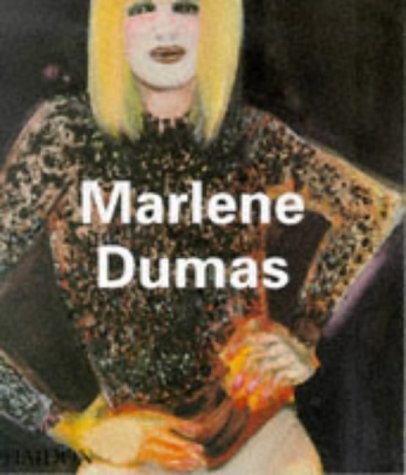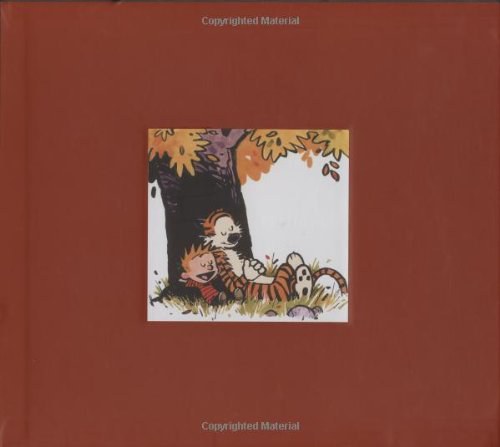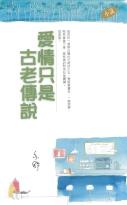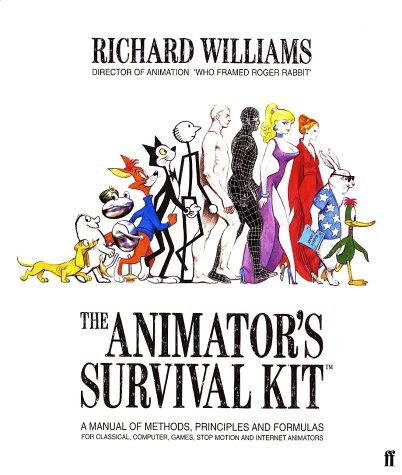![[匈牙利] 李盖提·拉约什《黄色的神祇 黄色的人民》](http://oss.shudanhao.com/caiji/chazidian/2023/23778.jpg)
[匈牙利] 李盖提·拉约什《黄色的神祇 黄色的人民》
书刊介绍
内容简介
Lajos Ligeti
October 28, 1902 - May 24, 1987
Ligeti was born at the North Hungarian city, Balassagyarmat. After his secondary school years at Gyarmat, he gained admission to the Budapest József Eötvös College of great fame and French orientation. As a student of the Faculty of Arts in the University of Budapest he studied classical philology, and learned even more absorbedly Turkish philology and severe judgement from Gyula Németh, with whom the undergraduate dissected the works of great Vámbéry to false and true segment. He learned etymology, a passion to search for the Turkish elements of Hungarian language from Zoltán Gombocz. But he realized that at home he could not arrive at the final source of our relationship with, and beyond, the Turkish peoples, so after he took a Ph. D. degree with honours - then rewarded with an iron ring instead of the golden one of the pre-war time - he gladly went to Paris to be instructed by the great masters of Sorbonne. On a Hungarian scholarship, he studied Chinese subjects with Henri Maspéro, Tibetan philology - in the wake of Csoma de Kőrös - with Jacques Bacot, and first and foremost, the Mongolian and related fields with highly versatile Paul Pelliot, his most influential professor in Paris.
The metropolis urged him to stay, but he returned to Hungary, into unemployment. Eventually he managed to raise support for an expedition to China. In 1928-30 he visited the Mongols in the north between theGreat Wall and the Gobi Desert. He lived in lamaistic monasteries and studied the little known languages of southern and eastern Mongolians: Chahar, Harchin Tumet and Dagur, so important for its ancient pecularities. Most of his collection was destroyed during the Second World War, but his invaluableold Mongolian, Manchu, Tibetan and Chinese Manuscripts and books survived, which he gave to the Library of the Hungarian Academy as a gift. In his scholarly report (Rapport preliminaire..., 1933) he made mention of his inquiry into the 108-volume Mongolian Buddhist canon, which he was the first to describe as an immense source for linguistic, cultlral and historical research (Catalogue du Kanjur mongol imprimé, 1942-1944). In the autumn of 1936 he travelled to Afghanistan, where he sought out the Moghols, a people believed to have already vanished, and reported new data on their disappearing language. He also studied the folklore of the Uzbeks in Afghanistan. In the meantime he dicovered the correlation between the long vowels of old and contemporary Turkish languages.
From 1936 he was elected corresponding member of the Hungarian Academy of Sciences and an ordinary member from 1947. He was 37 when he became a professor of the Faculty of Arts in the University of Budapest and a year later he was appointed to the holder of the Chair of Inner Asia. He was the first to teach there Mongolian and Tibetan language and culture, Inner Asian history and Manchu, from the alphabet to many settled and unsettled quetions and to various complex methods of investigations. In addition to his own department, for twenty years, he also held the Chair of the Far East, where he taught the first generations of Hungarian sinologists. For several years he was in the Chair of Turkish philologyas well. Among others, he was also managing director of the Institute for Hungarian Studies.
He was the vice-president of the Hungarian Academy of Sciences for two decades. He was the founder of Acta Orientalia Academiae Scientiarum Hungaricae, so far the longest-lived of our journals devoted to Oriental studies; he edited the monograph series Bibliotheca Orientalis Hungarica in Europaean languages and that of the Csoma de Krös Pocket Library in Hungarian; he reorganized the Csoma de Krös Society, set up a research group under the aegis of the Academy to constitute a workshop for tacking the philological problems of Mongolian, Turkish, Manchu, Tungus and Inner Asian subjects. He initiated the teaching of Altaic subjects at Szeged University. He donated his private library of several thousand volumes to the library of Szeged University.
After his tour of Japan at the onset of the Second World War, from the late 40-s he travelled extensively, also to Mongolia and again to China, though for shorter times. He devoted most of his time left from his university and academy engagements to research. He probed into the history of the Mongolian, Turkish, Manchu, Tungus and Tibetan languages, literature and culture, published and interpreted sources, edited the Collection of Mongolian Written Monuments and the Mongolian Vocabulary of Istanbul, dechipered the Mongolian material in the Yemen Polyglot written in Arabic script, threw light on the principles and dechipherment of the Jurchi "small characters" and searched for the key to the Khitan language and writing.
He published in Hungarian and in foreign languages (first of all in his favourite French); he wrote for the narrow circle of connoisseurs and for all literate Hungarians in a wise, well- refined style. He translated the Secret History of the Mongols, the Tibetan Sa-skya pandita's Subhasitaratnanidhi into Hungarian. His last greatest work, The Early Turkish Relations of the Hungarian Language before the Conquest and during the rpád Dynasty - published in Hungarian - is good reading for experts and lay readers alike for all who are interested in the living linguistic proof of our relationships reaching as far as the easternmost corners of Inner Asia, and in the Hungarian prehistory in general.
He was a member of several scholarly associations abroad. Several Hungarian decorations and those of other countries acknowledged his endeavours in education, research, organization and the public life.
Kara György, Louis Ligeti, 1902-1987: AOH 41(1987) pp. 3-6.
作品目录
前言(豪泽伊.捷儿吉)()
引言()
出版者注()
认识中国。在东亚的第一年()
在北京。准备内蒙古之行()
张家口,蒙古的大门()
越过长城。玛尔盖庙()
七湖之城:多伦诺尔()
布彦德尔格,我的房东()
“黄殿”()
寺院的祸端()
在寺院里的第三个月()
在前往喀喇沁王爷寺院的路上()
在亚林皮尔喇嘛的房子里()
活佛和其他高僧()
蒙古新年()
蒙古王爷贡桑诺尔布()
公爷府的呼毕勒罕()
在十一面观音的洞窟里()
山中的盗匪天下()
医生()
在途中。红色岩石的城市:哈达()
经过汉人的孤岛,去找敖汉蒙古人()
继续向东南方行进()
大寺()
占星师德瓦钱波()
沉沦的蒙古人世界。回到北京()
后记()
相关推荐
-

隋唐五代史讲义
隋唐五代史讲义 内容简介 《郑天挺隋唐五代史讲义》是根据已故郑天挺教授20世纪30—50年代先后在浙大文理学院、北大历史系、西南联大历史系、南开大学历史系开设“...
-

(精)甲骨文·肇造区夏:宋代中国与东亚国际秩序的建立
(精)甲骨文·肇造区夏:宋代中国与东亚国际秩序的建立 本书特色 与开放多元的唐帝国相比,两宋的政治文化给后世留下了封闭内省的印象。但谭凯认为,拜唐末五代特殊的地...
-

假如给我三天光明
《假如给我三天光明》内容简介:本书内藏《假如给我三天光明》、《我生命的故事》、《三论乐观》、《在芒特艾里的演讲》以及海伦·
-

赳赳民国
赳赳民国 本书特色 挖掘以往被忽略被遮蔽、动人心魄的历史细节,剖露人性的卑鄙与高尚。耿氏的历史散文,感情丰沛,风格独特,读来淋漓中又见人性的悲悯。本书中的散文,...
-

室内设计与制图(第2版)
《室内设计与制图(第2版)》内容简介:室内装修设计图纸是设计师与客户沟通的工具,也是后续施工的重要依据。《室内设计与制图(第
-

电商一本通
《电商一本通》内容简介:本书全方位阐释了从0到1运作一个电商所需的各领域知识图谱,包括市场分析与目标客户选择、商业模式、平台
-

中原抗战亲历记
中原抗战亲历记 本书特色 本书是原国民党将领关于抗日战争中原抗战之亲历记录。一九三七年十月中旬,日军沿平汉铁路两侧南犯,直抵漳河北岸。中国军队与敌展开激战,揭开...
-

二十世纪中国学术论辩书系:二三十年代中国社会性质和社会史论战(精 历史卷)
二十世纪中国学术论辩书系:二三十年代中国社会性质和社会史论战(精 历史卷) 内容简介 《二三十年代中国社会性质和社会史论战》主要内容包括有研究状况和论战背景、关...
-

黑暗大陆:20世纪的欧洲
《黑暗大陆:20世纪的欧洲》内容简介:社会和政治工程的混搭实验室。全面论述20世纪欧洲的艰难历程。马克·马佐尔戳穿自由民主的神
-

中国近代慈善思想研究
中国近代慈善思想研究 本书特色 本书主要研究在中国近代贫民问题严重、传统救济理论和实践难以应对的背景下,近代慈善家和思想家在探索新的慈善模式的实践中逐步形成的慈...
-

公主和亲:历史深处的一抹胭脂红
公主和亲:历史深处的一抹胭脂红 本书特色 习习的《公主和亲(历史深处的一抹胭脂红)》稿为“华夏文明之源丛书”之一。书稿从文化和历史的角度,讲述汉唐时期,尤其是汉...
-

草莽皇帝朱元璋-漫说中国历史-37
草莽皇帝朱元璋-漫说中国历史-37 本书特色 我衷心乐见的《漫说中国历史》终于问世了。《漫说中国历史》除了以漫画形式呈现传说中的盘古、女娲、共工、祝融等大神的传...
-

旧制度下的俄国
《旧制度下的俄国》内容简介:俄罗斯是个在国家政权方面的发展与欧洲其他国家不同的地区,严酷的地理条件和庞大的国土面积使得建立
-

金元日记丛编
金元日记丛编 本书特色 顾宏义、李文整理的《金元日记丛编》收录金人日记2种、元人日记(包括存、残、辑佚)7种,共计9种。虽题名“日记”却属笔记之类著作如姚燧《西...
-

万历十五年
万历十五年 内容简介 本书以万历十五年前后的史事及人物为中心,以“大历史”观念梳理了中国传统社会管理层面的种种问题,并由此探讨现代中国应当汲取的经验教训,自在中...
-

唐景崧传
《唐景崧传》内容简介:本书从寒窗苦读中进士到热血请缨赴越南联络刘永福抗法,到任职台湾,后署理台湾巡抚领导乙未抗日,到自台湾
-

元史十八讲
元史十八讲 本书特色本书共分十八讲,以时间为主要线索,为读者讲述了从铁木真统一蒙古诸部开始,到元顺帝亡国为止蒙元帝国的兴衰历程。并对诸如蒙元时期的经济、文化、政...
-

历史从来都有真性情
历史从来都有真性情 本书特色 1.作者夏凡是北大教授,知名学者,赴美留学十年,继承了范文澜、吕思勉等人的治学传统,对中国史有独到的研究,敢说新见。 2. 本书是...
-

怛逻斯之战-唐与阿拉伯帝国的交锋
怛逻斯之战-唐与阿拉伯帝国的交锋 本书特色 公元八世纪中叶,大唐王朝与阿拔斯王朝在中亚展开了激烈的争夺,著名的怛逻斯之战爆发。由于地缘上的原因,中亚各个小国,也...
-

俞辛焞|王振锁《孙中山在日活动密录》
孙中山在日期间以国家领土,主权为筹码换取日本对其支持。惜乎,卖国无门!目录 本书根据日本外务省外交史料馆收藏的外务省档案





